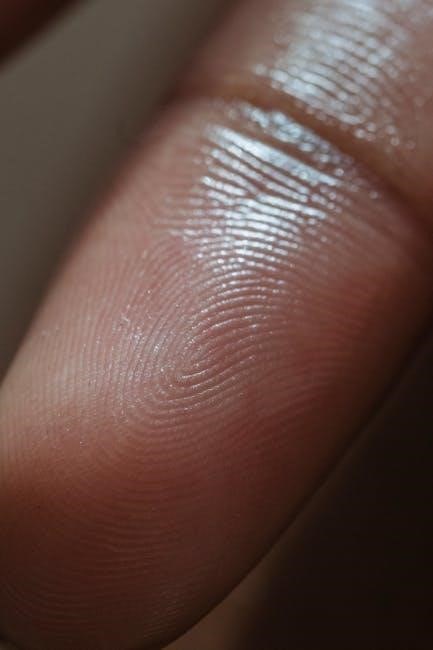VW Parts Interchange Guide⁚ A Comprehensive Overview
This guide explores the intricacies of Volkswagen parts interchangeability, covering various models and even cross-brand compatibility with Audi. We’ll delve into decoding part numbers, utilizing online resources, and exploring junkyard options for finding suitable replacements. Learn about limitations and discover helpful resources for your VW repair needs.
Understanding VW Part Numbers
Volkswagen part numbers are alphanumeric codes that contain crucial information about a specific component. Understanding their structure is key to efficient parts identification and interchangeability checks. The first digit often denotes the vehicle type, followed by digits specifying the model and version. Subsequent digits indicate the main part category and subcategory. Finally, a component number uniquely identifies the specific part within that subcategory. For instance, a number starting with ‘1’ might signify a specific part for a particular model, while ‘2’ might represent a different model line. This systematic structure allows for quick cross-referencing and identification of compatible parts across different VW models and even potentially across the wider VAG group (Volkswagen, Audi, Skoda, Seat).
Variations within part numbers can reflect different revisions, materials, or manufacturing processes. Sometimes, a seemingly small difference in a part number indicates a crucial alteration affecting compatibility. Understanding these nuances is crucial for accurate parts selection and avoiding potential installation issues. Always double-check the full part number against your vehicle’s specifications and consult online resources like official VW parts catalogs or reputable online retailers to verify compatibility. Failure to do so could lead to incorrect part purchases and potential vehicle damage. Therefore, meticulous attention to detail is paramount when dealing with VW part numbers to ensure successful repairs and maintenance.
Decoding VW Part Number Structure
VW part numbers, while seemingly cryptic, follow a logical structure. Mastering this structure is essential for identifying compatible parts across different VW models and even other VAG brands. A typical part number consists of several sections. The initial digit(s) often denote the vehicle type or platform. Following this are digits indicating the specific model, variant, and year. Subsequent digits represent the main part category (engine, transmission, body, etc.), followed by subcategories that narrow down the component type. The final digits represent a unique component number within that subcategory.
For example, a number might start with “1H0,” suggesting a specific model range. The next digits might specify a particular engine or body part. The following digits refine this further, indicating specifics such as the part’s sub-assembly or variant. The final digits act as the unique identifier for the specific part within the already established category. Note that slight variations within the number can signify differences in manufacturing year, material, or design revisions. Therefore, comparing the entire part number is crucial, as seemingly minor differences can signify incompatibility. Online resources and VW parts catalogs are indispensable tools for decoding these numbers and verifying compatibility with your specific vehicle.
Cross-Referencing Parts Across VW Models
Successfully cross-referencing parts across various Volkswagen models requires a methodical approach. Understanding the VW model lineage and platform sharing is crucial. Models within the same platform (e.g., MK4 Golf, Bora, Jetta) often share many interchangeable parts, especially mechanical components like engines, transmissions, and suspension parts. However, even within the same platform, subtle differences might exist due to trim levels or production years. Always verify part numbers for exact matches. Body and interior components exhibit less interchangeability due to styling variations and design changes across models.
Online forums and enthusiast communities can be invaluable resources for finding information on part interchangeability. Experienced VW owners often share their knowledge and experiences, highlighting compatible parts across models. When using online resources, be sure to specify the exact year and trim level of your vehicle to avoid potential incompatibility. Remember, while mechanical parts may share more compatibility, body panels, lights, and interior trim generally show less interchangeability. Always double-check part numbers to ensure a perfect fit, as even seemingly minor variations can prevent proper installation and function.
Interchangeability Between VW and Audi Parts
Volkswagen and Audi, both under the Volkswagen Group umbrella, share a significant degree of parts interchangeability, particularly concerning mechanical components. This is because both brands often utilize similar platforms and engine designs. For instance, engines, transmissions, and suspension parts frequently show cross-brand compatibility. However, it’s crucial to understand that this interchangeability isn’t universal. While some mechanical components might be directly swappable, others may require minor modifications or adjustments for a proper fit.
Body and interior parts, on the other hand, exhibit considerably less interchangeability between VW and Audi models. This stems from the distinct design languages and styling cues of each brand. Headlights, taillights, bumpers, and interior trim pieces are rarely interchangeable. Before attempting any cross-brand part swap, always verify part numbers and consult online resources or forums dedicated to VW and Audi enthusiasts to confirm compatibility. Using incorrect parts can lead to poor fit, functionality issues, or even damage to your vehicle. Always prioritize accuracy when sourcing parts to ensure seamless integration and optimal performance.
Identifying Interchangeable Parts Using Online Resources
The internet offers a wealth of resources for identifying interchangeable VW parts. Online forums dedicated to Volkswagen enthusiasts are invaluable, providing a platform for users to share their experiences and knowledge on part compatibility across different models and years. These forums often contain detailed discussions, offering insights into successful part swaps and potential pitfalls to avoid. Many forum members have firsthand experience with specific parts and can provide accurate information regarding fitment and functionality.
Furthermore, several online databases specialize in automotive parts interchange. These databases allow users to input a specific part number or vehicle details and retrieve a list of compatible parts from other models. Some websites even incorporate visual tools, such as diagrams or images, to aid in part identification and comparison. Utilizing these online resources can significantly streamline the process of finding interchangeable parts, saving both time and effort. Remember to cross-reference information from multiple sources to confirm compatibility before purchasing any parts.
Utilizing Online Databases for Parts Interchange
Several dedicated online databases significantly simplify the process of finding interchangeable VW parts. These platforms often allow searches using various criteria, including VW part numbers, model year, and even VIN (Vehicle Identification Number). By inputting this information, users gain access to comprehensive lists of compatible parts across different VW models and, in some cases, even other VAG (Volkswagen Audi Group) brands. This functionality streamlines the search for equivalent parts, eliminating the need for extensive manual cross-referencing.
Many of these databases offer detailed specifications for each part, including dimensions, material composition, and manufacturer details. This level of detail is crucial for ensuring proper fitment and performance. Moreover, these online databases frequently integrate with online retailers, allowing users to directly purchase identified interchangeable parts. This seamless integration streamlines the entire process, from initial identification to final purchase. It’s important to note that while these databases are highly effective, always double-check compatibility before making a purchase, as errors can occur.
Finding Interchangeable Parts in Junkyards
Junkyards, also known as salvage yards or auto recyclers, present a cost-effective alternative for sourcing Volkswagen parts. While finding specific parts can require patience and some legwork, the potential for significant savings is substantial. Before visiting a junkyard, it’s beneficial to have as much information as possible regarding the needed part, including the part number, model year, and any other relevant specifications. This preparation streamlines the search process, saving time and effort.
Many modern junkyards maintain online databases or catalogs of their inventory. These online resources allow you to check availability remotely, potentially saving you a trip if the desired part isn’t in stock. If the part isn’t listed online, calling the junkyard directly to inquire about availability is recommended. Remember to carefully inspect any used part for damage or wear before purchasing, ensuring its suitability for installation. While junkyards offer a budget-friendly avenue for part acquisition, it is crucial to remember that the availability of specific parts fluctuates constantly, influenced by the vehicles currently in their inventory.
Using VIN Numbers to Identify Compatible Parts
The Vehicle Identification Number (VIN) is a 17-character alphanumeric code uniquely identifying every vehicle. This code provides crucial information about a car’s specifications, including the model year, engine type, and trim level. Utilizing the VIN is a highly effective method to ensure parts compatibility when searching for replacements. Many online parts retailers and Volkswagen dealerships allow you to search for parts using the VIN. This search method guarantees that the parts are precisely matched to your vehicle’s specifications, minimizing the risk of incompatibility.
Accessing your vehicle’s VIN is straightforward; it’s typically located on the driver’s side dashboard, visible through the windshield, or on the driver’s side doorjamb. Once you have the VIN, inputting it into the search bar of an online parts retailer or a Volkswagen dealership’s website yields a list of parts guaranteed to fit your car. This precision minimizes the guesswork involved in determining part compatibility, ensuring a smoother repair process. For used parts, obtaining the VIN of the donor vehicle and comparing it to your own helps verify compatibility.
Mechanical Parts Interchangeability (Engines, Transmissions, etc.)
Interchangeability of major mechanical components like engines and transmissions between Volkswagen models hinges significantly on the platform and generation. While sharing components within the same platform (e.g., various Golf models within the MK4 generation) is more common, cross-platform interchangeability is often limited due to variations in size, mounting points, and ancillary systems. Engine codes offer a crucial clue; similar codes often indicate parts compatibility; However, even with similar engine codes, careful verification of specific components (e.g., intake manifolds, exhaust systems) is necessary due to potential variations within the same engine family across different model years.
Transmissions present a similar scenario. While certain transmission types might be shared across models, subtle differences in gear ratios, control systems, and mounting hardware can affect direct interchangeability. Consulting a detailed parts catalog or online resources specific to your vehicle’s year, make, and model is essential. For instance, a 02M transmission found in certain Golf models might have variations incompatible with a seemingly similar unit in a different model. Always cross-reference part numbers to ensure precise compatibility, avoiding potential issues during installation or operation. Ignoring these details could lead to costly mistakes.
Body and Interior Parts Interchangeability
Unlike mechanical components, body and interior parts interchangeability between Volkswagen models, and even between Volkswagen and Audi, is significantly more restricted. While some generic parts like fasteners or certain interior trim pieces might share compatibility across multiple models, major body panels (doors, fenders, bumpers) rarely interchange directly. Design variations, dimensional differences, and unique mounting points often prevent straightforward replacements. Even within the same model range, subtle changes across model years can render parts incompatible.
For instance, headlights, taillights, and grilles are typically model-specific, often incorporating unique shapes, mounting brackets, and wiring harnesses. Interior components, such as door panels, dashboards, and seats, also exhibit significant variations across models due to design aesthetics and manufacturing differences. While some interior trim pieces might be interchangeable, larger components rarely are. Before attempting any body or interior part replacement, meticulously verify part numbers and compatibility using online databases or consulting official parts catalogs. Ignoring these precautions could lead to costly mistakes and improper fitment, potentially impacting vehicle safety and functionality.
Commonly Interchangeable Parts Across VW Platforms
While complete body or interior part interchangeability is rare across Volkswagen platforms, certain mechanical components often share compatibility. Engines, transmissions, and suspension parts, for example, can sometimes be interchanged between different VW models, especially those sharing similar platforms or architectures. This interchangeability is often driven by the use of common engine blocks, transmission cases, or suspension components across various vehicles within a particular generation or platform. However, even within these categories, minor variations in sub-components, mounting points, or ancillary systems might necessitate careful cross-referencing before installation.
For instance, certain engine components, like sensors or fuel injectors, might be interchangeable across several engines within a specific engine family. Similarly, some suspension parts, such as control arms or bushings, might be common to multiple models. However, it’s crucial to verify part numbers and specifications to ensure proper fitment and functionality. Consult online resources like parts catalogs or online forums dedicated to specific VW models to identify commonly interchangeable components and potential compatibility issues. Remember, always prioritize safety; using incompatible parts can compromise performance and potentially lead to mechanical failures.
Limitations of Parts Interchangeability
While the prospect of readily interchangeable parts across Volkswagen’s diverse model range is appealing, several limitations exist. Not all parts are created equal, even within the same model year. Subtle design changes, material variations, or manufacturing differences can render seemingly identical parts incompatible. This is particularly true for body panels, interior trims, and electrical components, where precise fit and function are critical.
Furthermore, even when mechanical components like engines or transmissions share similar architectures, variations in sub-systems, mounting hardware, or ancillary equipment can impede direct interchangeability. For example, a seemingly compatible transmission might require modifications to the mounting brackets or linkages to fit a different model. Similarly, seemingly identical engine parts might have minor dimensional discrepancies that prevent proper installation or function.
Therefore, relying solely on model year or general part descriptions can be misleading. Always cross-reference part numbers meticulously to ensure compatibility. Consulting official Volkswagen parts catalogs or utilizing reliable online resources dedicated to VW parts identification is essential to avoid potential issues. Improper part installation can lead to performance degradation, safety hazards, or even irreversible vehicle damage.
Resources for Finding VW Parts Interchange Information
Several avenues exist for uncovering valuable VW parts interchange information. Volkswagen’s official parts catalogs, though often requiring dealer access, represent the most reliable source. These catalogs meticulously detail part numbers, specifications, and compatibility across models. However, online resources offer alternative solutions. Many dedicated VW forums and online communities provide a wealth of user-generated information, including firsthand accounts of successful and unsuccessful part interchanges.
Independent online parts retailers often incorporate interchange search tools into their websites. By inputting a specific part number or vehicle details, these tools can identify compatible parts from various models or even brands. While generally reliable, always cross-check information across multiple sources. Salvage yards, while not always possessing comprehensive records, can be a valuable resource if you can physically inspect parts for compatibility. Their inventory fluctuates, so online searches might not reflect immediate availability.
Finally, specialized automotive databases, often subscription-based, provide extensive cross-referencing capabilities. These databases compile information from multiple sources, offering a more comprehensive view of part interchangeability across various makes and models. While requiring a fee, the depth of information and accuracy often justifies the cost for serious enthusiasts or professionals.


